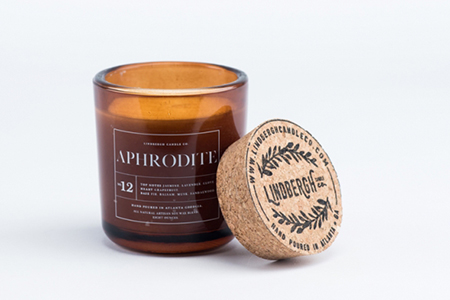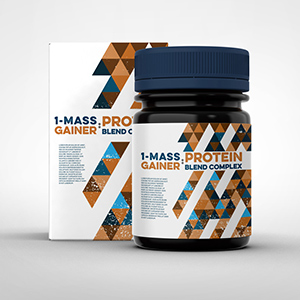Guide to Designing and Printing Your Own Product Labels
- James Hwang

- Jan 7, 2023
- 5 min read
Here at Frontier, we specialize in designing and manufacturing custom, eye-catching labels. We often get asked about ways that small business owners can design their own professional-looking labels. Unless you’ve got production at a certain scale, you might want to save money by designing your own labels for your products. As experts, we’ve got the process down pat and we want to share some quick tips to help designers and customers.

01. Know Your Product
All too often, makers get caught up on their designs and forget to make sure that their label will work as intended for its use. For instance, if you’re looking for labels for bottled beer, you’ll want something that is somewhat waterproof and extremely adhesive. Chances are that label will have to stand up to condensation and other forms of wear and tear and you don’t want your label falling off the first time someone touches it.

From our years in the label making business, we’ve seen great successes and some label ideas fall short. The main difference between a successful project and a failure is intimately knowing your product and planning ahead for success.
Understand how your product will be used will help ensure that you’ve got the right type of label for the job. For those who are new to this, here’s a quick guide on some common types of labels:
Thermal - Thermal labels or stickers that have a solid adhesive that loosens and bonds to other surfaces when you apply heat. You’ll commonly find these used in the food and beverage industry, especially on refrigerated goods. Not great for products that spend time on shelves in hot temperatures.
Semi-Gloss - A very common type of paper label or sticker that has a shiny, glossy finish. This type of label is great for economy uses, such as stickers, and can handle complex designs and colors.
Vellum - A general purpose non-gloss paper type for labels or stickers. Ideal for mass production of labels and commonly used in applications such as barcode stickers.
Vinyl/Plastic - Vinyl is a highly versatile non-paper, plastic-based label or sticker that is durable, temp-resistant, and flexible. Vinyl is also great for folks who don’t want a white background for their label or sticker.
Removable Plastic - Similar to the labels above, this one utilizes removable adhesive so you can easily remove your label or stick after placement and use. Think origin brand stickers on fruit and vegetables in the supermarket.
Trendy Candle Label and Perfect Skincare Label by Soluciones Creativas
02. Utilize Free Resources
Designing a professional-looking label is no easy task. Lucky for makers out there, there are tons of pro-bono resources out there that can help you design and image your labels before sending them to the printer. This allows you to ideate and even develop finished designs to stick within your budget. DesignCrowd's community of designers can, for example, generate beer label ideas where the professional label design is then mocked up on a bottle. You can also find a wide range of design templates available online that will allow you to design your own labels online for free. Here are some great resources:
StickerGiant Templates - This is a huge selection of common sticker templates. From circles to squares to specialty templates.
If you don’t have access to Adobe Creative Suite products, you can edit Photoshop files online using a tool called Photopea.
L.Theme’s Circle Sticker Template - This is a pretty straightforward sticker template that has everything that you need for a good sticker design.
StickerMule’s Custom Sticker Templates - StickerMule has a great resource on their site for common sticker templates as well as specialty templates.


03. Don't Reinvent the Wheel
If you’re a designer, then you already have the training, design software and tools to create your own stylish and eye-catching design. If you're hiring aprofessional product label designer and need to provider a design brief, or you're designing them yourself, it's a good idea to work from designs that you already love. Don’t reinvent the wheel if you don’t have to.
We’re certainly not advocating plagiarism by any means, but there are design elements that are pretty common among most labels that you can utilize and build on for your own label designs. It's all about research and inspiration.

Western Craft Beer Label
You could create a Pinterest board or browse DesignCrowd galleries for label design ideas, pinnning or bookmarking your favorite designs in one place. Then, when you go to actually design your label (or if you’re having a professional do it for you) it won’t be difficult to describe what you want.
04. Do Your Research Into Printers
The last stage in your label-making process is getting them printed properly. This part of the process can make or break your labels so make sure that you do your due diligence ahead of time.

It doesn’t matter how much time and effort you put into your designs, if you’re working with a printer that cuts corners or uses sub par products, you’ll end up with a bad label and a lackluster first impression to your customers.
Here are some ways that you can vet your label printer beforehand:
Read reviews- this is the best way to get an idea of the quality of your printer. Are their reviews good? Do they seem to care about the label-making process? Do they quickly respond to customer questions and concerns?
Check out samples - any label printer worth their weight in vinyl will showcase some of their samples on their website so you (the customer) can get an idea of their capabilities and some of their past clients. Some will post you samples.
Review their process - along with their samples, most label printers will have a rundown of their printing process so that customers can see what to expect. That might include artwork reviews, manufacturing methods, and delivery timelines.
Check prices and quotes - last but not least, check their prices. If they’re dirt cheap, you might not want to go with them. Label printing is hardly a cheap process, so anyone with incredibly low costs are likely not going to be the best quality. It’s a situation of “you pay for what you get.” We’re not saying that price should be your only factor, but keep it in mind when making your selection.

Supplement Tablets Design Label
Ultimately, this guide is designed to give small businesses, product makers, and entrepreneurs a roadmap to getting custom labels made that look professional and work properly for their intended use. There are A LOT of other considerations that go into your product so use as many label resources as you can.
Written by Frontier Label, a label design, manufacturing and print shop located in Greenville, SC. They specialize in the label printing process and providing amazing customer service to creators and makers across the country.

















Comments